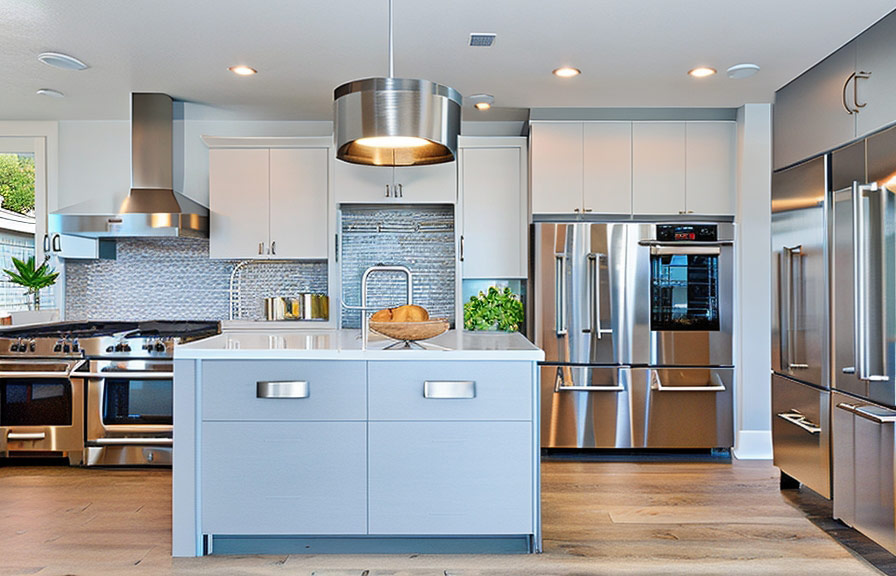Did you know that high-quality real estate photos can increase the perceived value of a property? it's true! a well-photographed space can attract more potential buyers and help you close the deal faster. but to achieve this, you need the right equipment.
In this blog post, we will discuss the best cameras, lenses, and lighting techniques for real estate photography.

The top cameras for real estate photography
The first step in capturing stunning real estate images is to invest in a reliable camera. here are some of the best options available on the market today:
1. Canon eos 5d mark iv: this full-frame dslr camera is a popular choice among professional photographers. it offers a 30.4-megapixel sensor, excellent low-light performance, and a wide dynamic range perfect for capturing the intricate details of any property.
2. Nikon d850: another full-frame dslr, the nikon d850, provides a massive 45.7-megapixel sensor, allowing you to capture incredibly detailed images. its excellent dynamic range and low-light capabilities make it a top choice for real estate photographers.
3. Sony a7r iv: for those who prefer mirrorless cameras, the sony a7r iv is a fantastic option. it boasts a 61-megapixel full-frame sensor and a compact design, making it easier to maneuver in tight spaces.
4. Panasonic lumix s5: this mirrorless camera offers a 24.2-megapixel full-frame sensor and impressive low-light performance. its compact size and 5-axis in-body image stabilization make it perfect for real estate photography.
Fun fact: the world's smallest commercially available digital camera is the chobi cam pro 3, measuring just about 1.7 inches wide and 1.1 inches tall! while it's not suitable for professional real estate photography, it's an interesting piece of trivia.
Choosing the right lenses for real estate photography
Now that you have your camera, it's crucial to select the appropriate lenses. the right lens can make all the difference in showcasing a property's true potential. here are some of the best lenses for real estate photography:
1. Wide-angle lenses: a wide-angle lens is essential for real estate photography, as it allows you to capture more of the room in a single frame. look for lenses with a focal length between 14mm and 24mm.
Some popular options include the canon ef 16-35mm f/2.8l iii usm, nikon af-s nikkor 14-24mm f/2.8g ed, and the sony fe 16-35mm f/2.8 gm.
2. Tilt-shift lenses: tilt-shift lenses help correct perspective distortion, a common issue in real estate photography. these lenses allow you to shift the optics, straightening converging lines and ensuring that walls appear parallel. examples of tilt-shift lenses are the canon ts-e 17mm f/4l and nikon pc-e nikkor 19mm f/4e
Ed.
3. Fisheye lenses: while not always necessary, fisheye lenses can provide a unique perspective, especially when photographing small spaces. however, use them sparingly, as they can create distortion if not used correctly. the canon ef 8-15mm f/4l fisheye usm and nikon af fisheye-nikkor 16mm f/2.8d are two excellent fisheye
Lens options.
You might not have heard of this, but some photographers use a technique called "brenizer method" or "bokeh panorama" to create a wide-angle, shallow depth-of-field effect by stitching together multiple images. this technique is not commonly used in real estate photography but can produce some stunning results in the right
Hands.
Lighting techniques for real estate photography
Lighting is a crucial aspect of real estate photography, as it can significantly impact how a property is perceived. here are some tips on how to light your real estate photos:
1. Maximize natural light: whenever possible, use natural light to your advantage. open curtains and blinds to let in as much sunlight as possible. schedule your photoshoot during the brightest part of the day to ensure optimal lighting conditions.
2. Use a tripod: a tripod can help you stabilize your camera, allowing you to shoot at slower shutter speeds and lower iso settings. this will result in less noise and better overall image quality.
3. Bounce flash: instead of pointing your flash directly at your subject, bounce it off a nearby surface, like a wall or ceiling. this will create a more diffused, natural-looking light that will evenly illuminate the room.
4. Hdr (high dynamic range) techniques: hdr photography involves taking multiple exposures of the same scene at different brightness levels and then combining them into a single image. this technique can help you capture the full rangeof shadows and highlights in a room, resulting in a more balanced and
Visually appealing photograph.
5. Use light stands and diffusers: if you need to supplement natural light, use light stands equipped with diffusers or softboxes to create a soft, even light that mimics the appearance of natural light.
6. Consider bracketing: bracketing involves taking multiple photos of the same scene with different exposure settings. this technique can help you ensure that you capture the best possible image, as you can later combine the best elements of each exposure to create a final, well-balanced photograph.
7. Pay attention to color temperature: different light sources have different color temperatures, which can impact the overall look of your photos. use a color temperature meter or adjust your camera's white balance settings to ensure that your images have a consistent and accurate color representation.
Conclusion
Capturing stunning real estate photographs requires a combination of the right equipment and proper techniques. by investing in a high-quality camera, selecting the appropriate lenses, and mastering various lighting strategies, you can showcase a property's true potential and appeal to potential buyers.
Remember, a well-photographed space can significantly increase the perceived value of a property, making your efforts well worth the investment.
Now that you know what it takes to create eye-catching real estate photos, it's time to put these tips into practice! with persistence, creativity, and the right tools, you'll be well on your way to capturing images that truly show the space and make your property listings stand out from
The competition.
